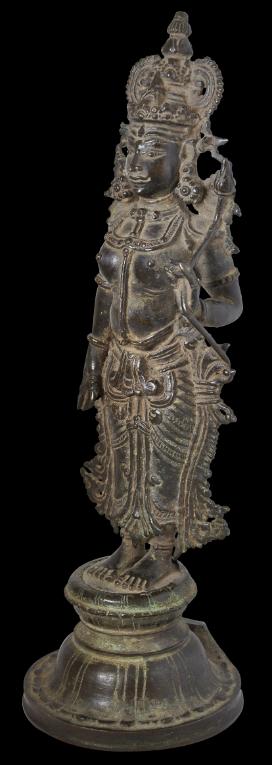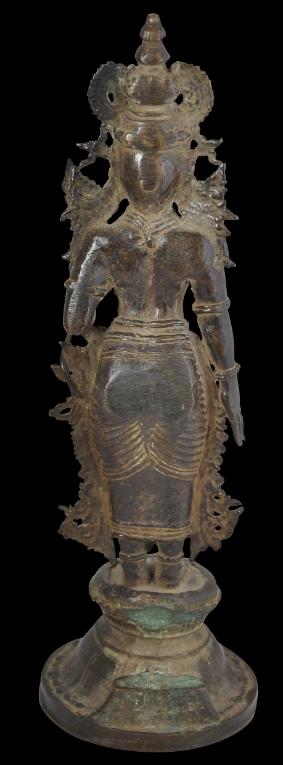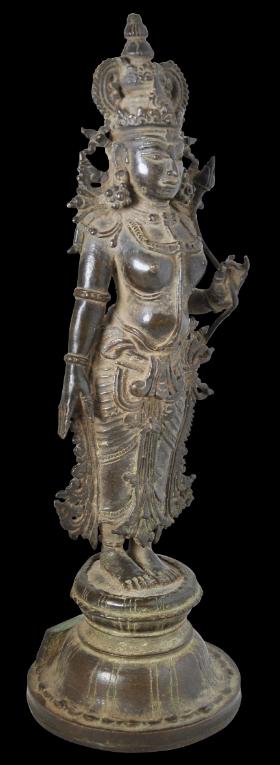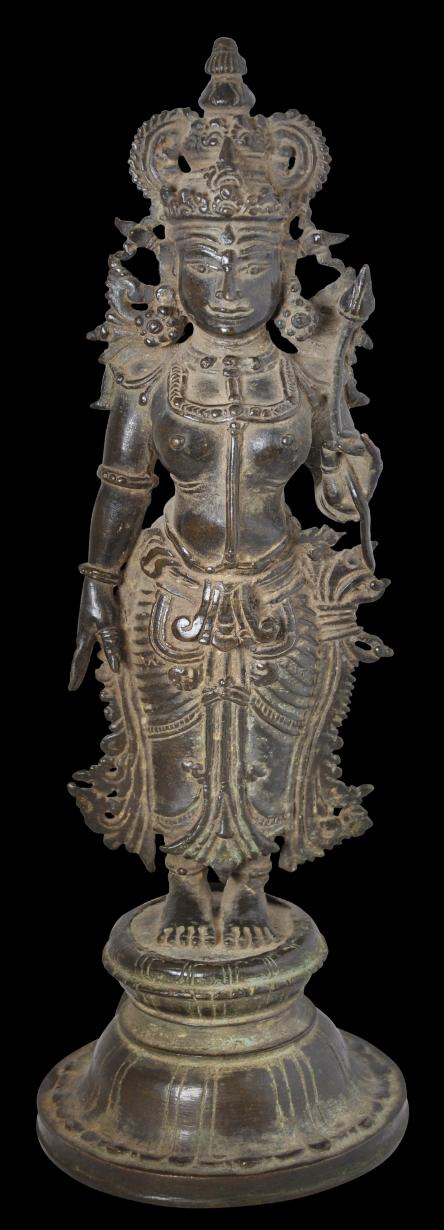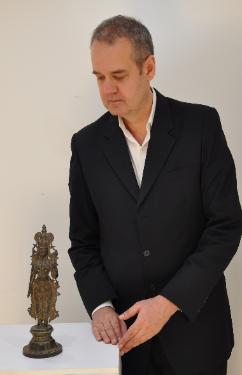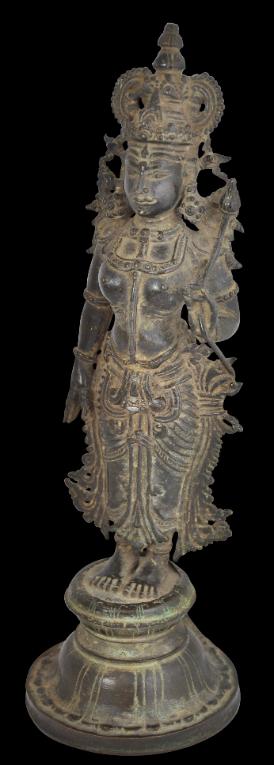
Kerala Bronze Bhudevi, India
Unusual, Large Bronze Figure of a Goddess, probably Bhudevi
Kerala, South-West India
16th century
height: 34.6cm
Most cast bronze images from southern India are from Tamil Nadu. Images from Kerala are much less frequently encountered. This fine cast-bronze image of a goddess dates to the sixteenth century and possibly earlier. The figure stands in an erect posture (samabhanga) on a separately cast circular lotus base. The left hand holds a lotus stem, the bud of which rests against strands of hair which fly out over the left shoulder. The closed bud suggests that this is Bhudevi, one of the two consorts of Vishnu, although more usually, Bhudevi is portrayed holding the closed lotus in the right hand.
The figure wears an elaborate Kerala-style headdress, copious jewellery, flowing ribbons, and pleated flowing dhoti.
The face has strong features and a mask-like quality in keeping with other Kerala bronzes of the period.
Two closely related images of similar height (allowing for the fact that one is missing its lotus base) are in the Norton Simon Museum and illustrated in Pal (2003, p. 305). The similarity in detail between the Norton Simon pair and the example here is considerable. All three show layers of rolling flesh below the ample breasts for example. The Simon Norton bronzes are attributed to the sixteenth century but other similar bronzes have been given earlier dates. One in the Government Museum in Madras (Chennai) and illustrated in Khandalavala et al (1988, p. 170) is attributed to circa 14th century, for example. The style dates back to the 10th-11th century Chera period in Kerala, which developed quite differently to the Chola style of Tamil Nadu.
The erect pose is typical of sixteenth century and earlier Kerala bronzes, but as Pal (2003, p. 305) comments that for the Kerala artists, ‘the exuberant delineation of the garments acts as a foil for the rigid posture.’ Also, in respect of the two Norton Simon bronzes, ‘not only do the two figures form an impressive pair, but along with the Vishnu [another Kerala bronze in the collection], they are among the more attractive bronzes outside the region.’
The bronze here has a fine, dark patina: its age is obvious. The contours have been softened from ritual handling and time. There are no obvious losses other than the lack of aureole at the back. Small sections of the buttocks, the backs of the arms, and the back of the head have been filed flat, and there is a flattened section at the back of the lotus pedestal which suggests that the caster originally intended for something to be added, probably an aureole or backing plate – although this appears to have been removed at the time of manufacture or soon after. It seems likely that the image was part of a group and the back might have been filed to allow it to stand against some broader backing plate. Pal (2003) similarly feels that the Norton Simon examples were part of a group.
Overall, this a large and rare bronze from South India, with much sculptural and historical appeal.
References
Khandalavala, K., et al, The Great Tradition: Indian Bronze Masterpieces, Festival of India, 1988.
Pal, P., Art from the Indian Subcontinent: Asian Art at the Norton Simon Museum, Yale University Press, 2003.
Provenance:
acquired by the previous owner at Sotheby’s London, 24 November 1986, lot 32.
Inventory no.: 3228
SOLD

